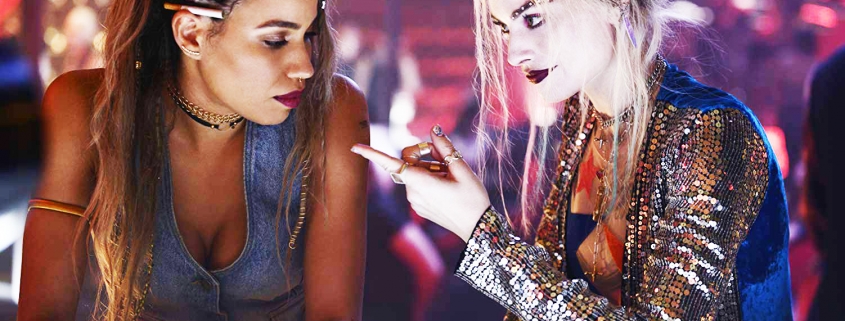REVIEW: ‘Birds of Prey’ offers colorful, feminist, diverse superhero tale
Vibrant colors and explosive fight scenes make Cathy Yan’s “Birds of Prey” a wildly entertaining film, notwithstanding the few weak plot points that fail to bring the movie’s energy down.
Harley Quinn and the Joker have called it quits. Quinn, played by Margot Robbie, goes through standard breakup procedure by having a catastrophic meltdown (literally — she triggers a chemical explosion) and cutting her hair. Her process includes battling the entirety of Gotham City, since once she loses the Joker’s protection, everyone with any grievance against her comes for her life.
To gain protection from sadistic nightclub owner Roman Sionis (Ewan McGregor), Quinn is tasked with locating Cassandra Cain (Ella Jay Basco) for him, a young pickpocket who has stolen and swallowed a diamond worth fortunes.
Across town, fiery detective Renee Montoya (Rosie Perez) takes part in the manhunt for Quinn, though she is held back by her department’s underestimation of her after not getting credit for a breakthrough case years ago.
To add to the mix, Sionis’ personal driver, Dinah Lance (Jurnee Smollet-Bell), otherwise known as Black Canary, pretends to be under his thumb to help him locate Cain while secretly relaying information back to Montoya. The pairing of Black Canary and Montoya is especially fun to watch, as both women are efficient and clever in their scheme.
In the end, all of the women must work together to protect Cain from Sionis’ violence, along with The Huntress (Mary Elizabeth Winstead), an abrupt inclusion toward the end. While another powerful female protagonist should be welcomed, her inclusion feels rushed and haphazard.
“Birds of Prey” is a women-led superhero film that is neither prequel nor period piece — the first of its kind. It’s debatable whether Quinn even counts as a superhero, but Robbie’s character is more intriguing because of this confusion. Although she has selfish and violent tendencies, she also displays moments of morality and goodness, giving her a likable anti-hero status that’s more human than any invincible, unrealistically perfect protagonist. And, blessedly, she has no love interest.
Some critics nitpick the fact that Quinn wears gaudy outfits — such as a flashy golden jumpsuit over a pink sports bra — while fighting off bad guys, as female superheroes tend to have more sexualized, impractical wardrobes. However, Quinn’s character is interwoven with a need to express her chaotic personality through colors and sparkles. Harley Quinn is Harley Quinn because of her ridiculousness, which includes an absurd wardrobe for hand-to-hand combat and shoot-outs.
Her look is a testament to the complexity of womanhood: Quinn is a strong fighter—at times fending off almost a dozen men at once—yet also feminine and eccentric in her style. She likes to fool around, but at the end of the day, she’s ingenuitive in her ways of escaping danger.
Moreover, Quinn’s illusion of ditziness ends up being the downfall of her enemies, as they underestimate her abilities without her ex-boyfriend. She’ll sometimes shock those around her by revealing her intellect, like when she is captured by Sionis and psychoanalyzes him right as he threatens her life. She connects his need for power to his childhood, a quip that makes the audience laugh while also reminding us that she has a doctorate in psychiatry.
With Puerto Rican, Black and Korean/Filipino women as three of the five main characters, “Birds of Prey” is remarkably diverse. In addition to racial representation, the cast ranges in age: Basco, playing Cain, is 13 years old, and Perez is 55 years old, yet that didn’t stop her from performing all of Montoya’s stunts herself. Montoya is also openly gay in the film, even having a few scenes with her ex. And neither of them die!
Even though they don’t always work together, there are many instances of each woman saving the others, with a notable lack of male saviors. Black Canary prevents Quinn from getting kidnapped while drunk in her post-breakup downfall; the Huntress helps the other women fend off an army of bounty hunters without any personal stake in the matter; and Quinn does everything in her power, including latching herself to a speeding car on her roller skates to save Cain in the end.
While “Birds of Prey” contains many empowering messages about female solidarity, the plot lacks in other ways: It’s as chaotic as Quinn’s personality, which can be fun at times but also jarring. Some of the jokes don’t hit quite right, such as a moment where Quinn accidentally inhales cocaine before a fight scene and a misplaced Frida Kahlo gag.
Additionally, its diversity isn’t foolproof. The other women in the cast are given unequal amounts of backstory, with The Huntress having about five real lines but receiving overly-extensive exposition of her past.
The writers missed a huge opportunity by not including any of Black Canary’s backstory. Her character is clever, dynamic and relatably down-to-earth; and yet, she only gets to use her power once. This lends to the ever-present Black sidekick stereotype, but it’s hard to see her as such when she proves her capabilities repeatedly in other ways. We also never get much character depth from Cain besides a bit of backstory about her parents.
Still, this group of women is refreshing because their diversity reflects reality. It doesn’t feel forced, as the film doesn’t pretend that these women are all best friends skipping toward a happy ending together — there’s understandable conflict between some of them, and they must temporarily work together until splitting up into two groups at the end.
Despite the few plot hiccups, “Birds of Prey” is a story of empowerment and complexity showing the extraordinary power that women can have when banding together against powers bigger than themselves.

